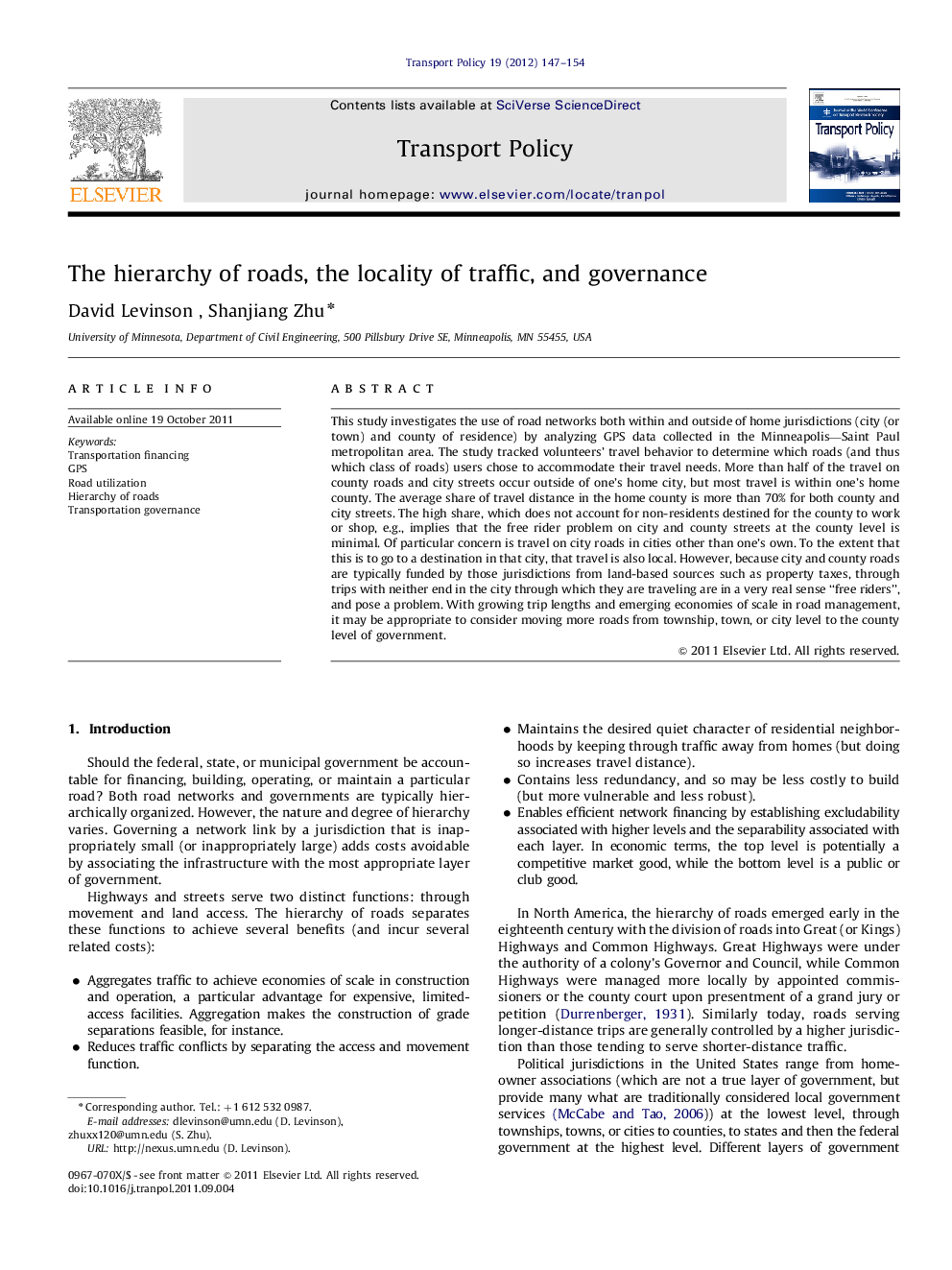| Article ID | Journal | Published Year | Pages | File Type |
|---|---|---|---|---|
| 1065158 | Transport Policy | 2012 | 8 Pages |
This study investigates the use of road networks both within and outside of home jurisdictions (city (or town) and county of residence) by analyzing GPS data collected in the Minneapolis—Saint Paul metropolitan area. The study tracked volunteers' travel behavior to determine which roads (and thus which class of roads) users chose to accommodate their travel needs. More than half of the travel on county roads and city streets occur outside of one's home city, but most travel is within one's home county. The average share of travel distance in the home county is more than 70% for both county and city streets. The high share, which does not account for non-residents destined for the county to work or shop, e.g., implies that the free rider problem on city and county streets at the county level is minimal. Of particular concern is travel on city roads in cities other than one's own. To the extent that this is to go to a destination in that city, that travel is also local. However, because city and county roads are typically funded by those jurisdictions from land-based sources such as property taxes, through trips with neither end in the city through which they are traveling are in a very real sense “free riders”, and pose a problem. With growing trip lengths and emerging economies of scale in road management, it may be appropriate to consider moving more roads from township, town, or city level to the county level of government.
► This study applies GPS data to investigate the locality of travel and road ownership. ► Most travel on county roads and city streets occur within one's home county in this study. ► The through traffic and free rider problems are more obvious for cities. ► Data suggests moving more roads from city level to the county level of government may be appropriate.
